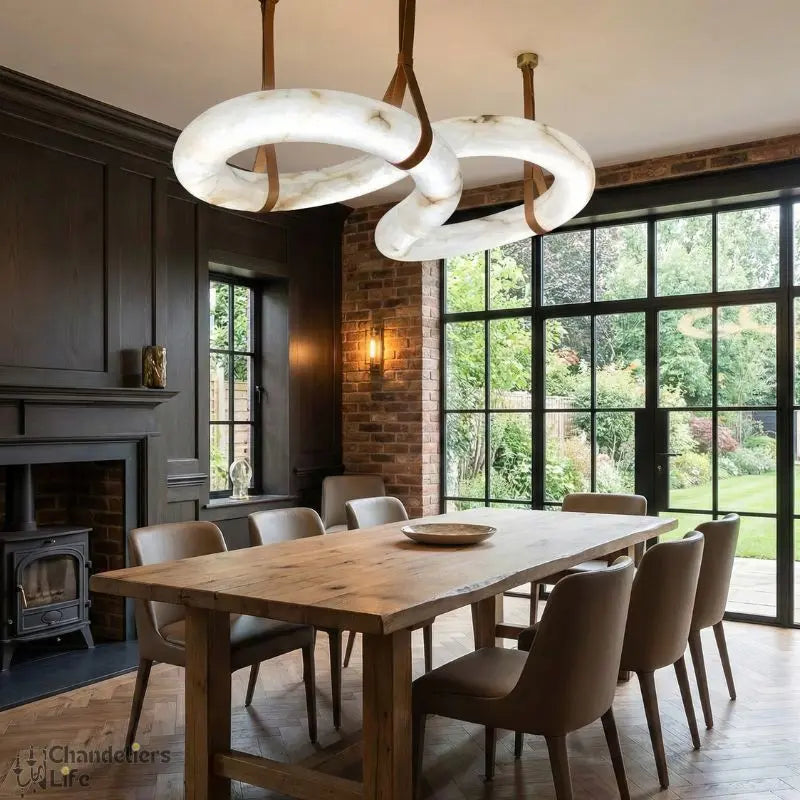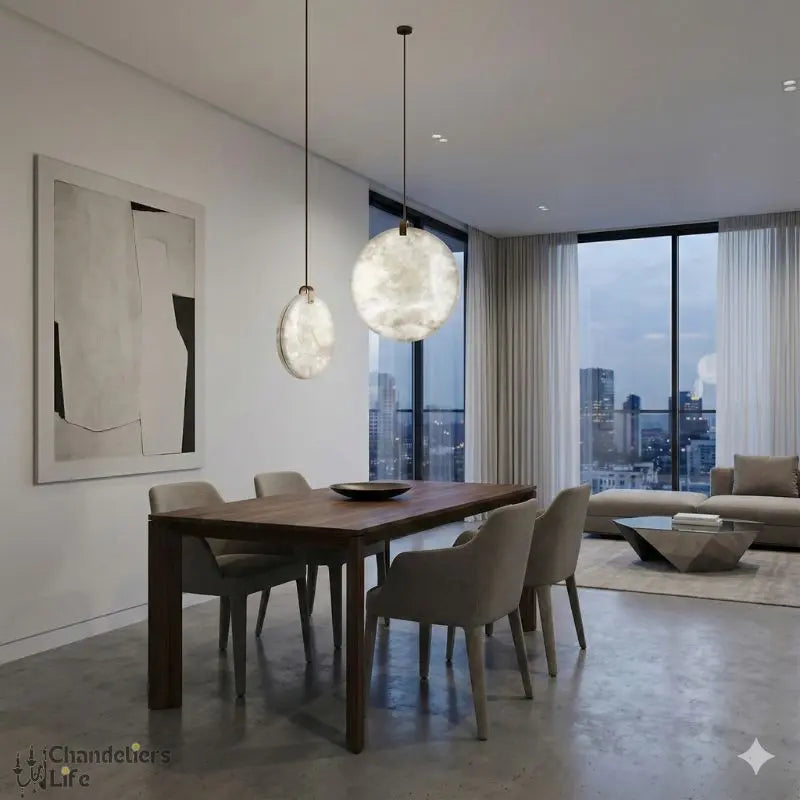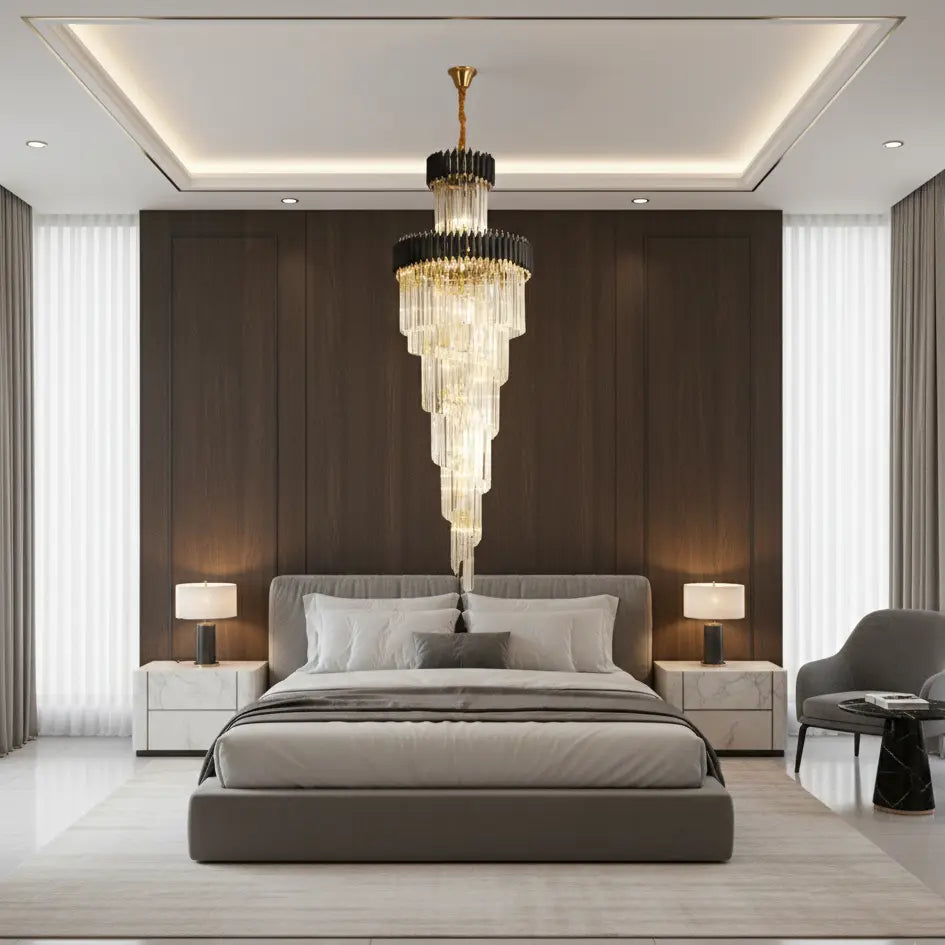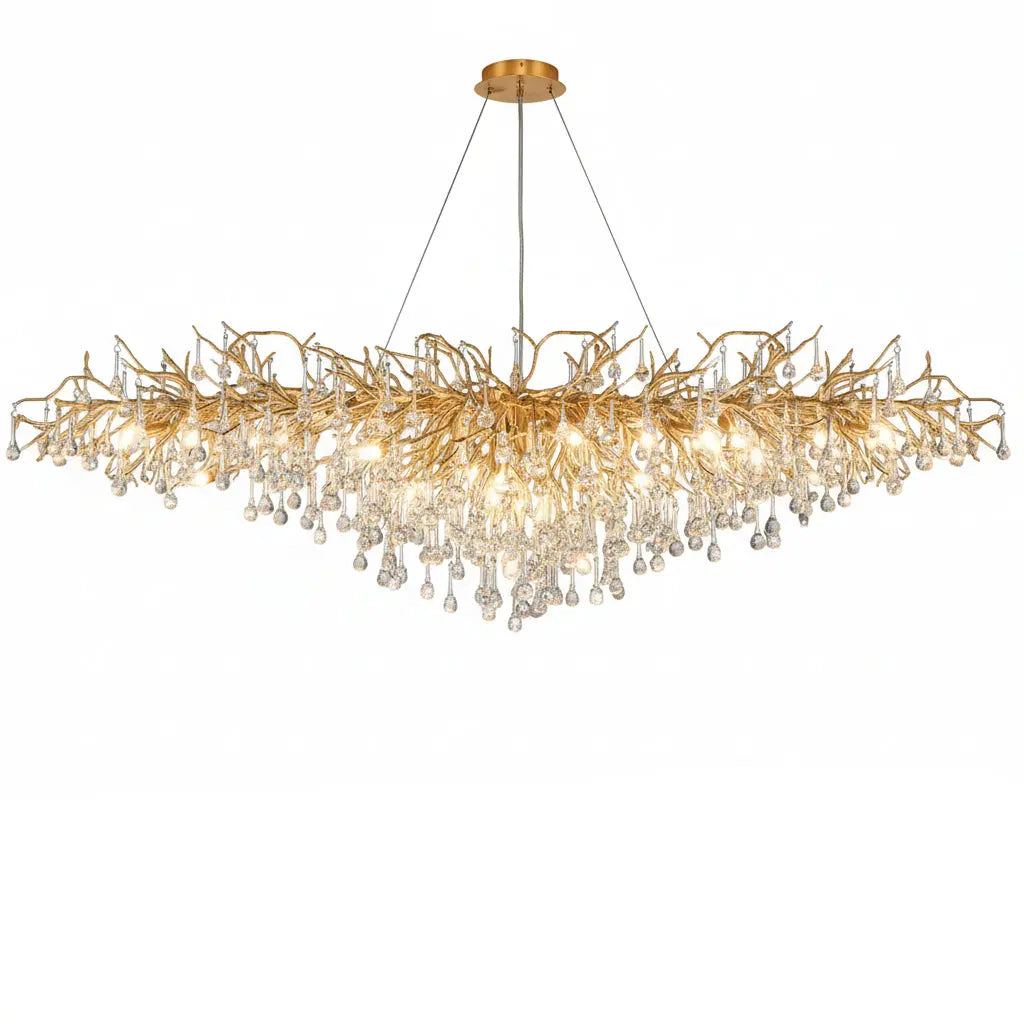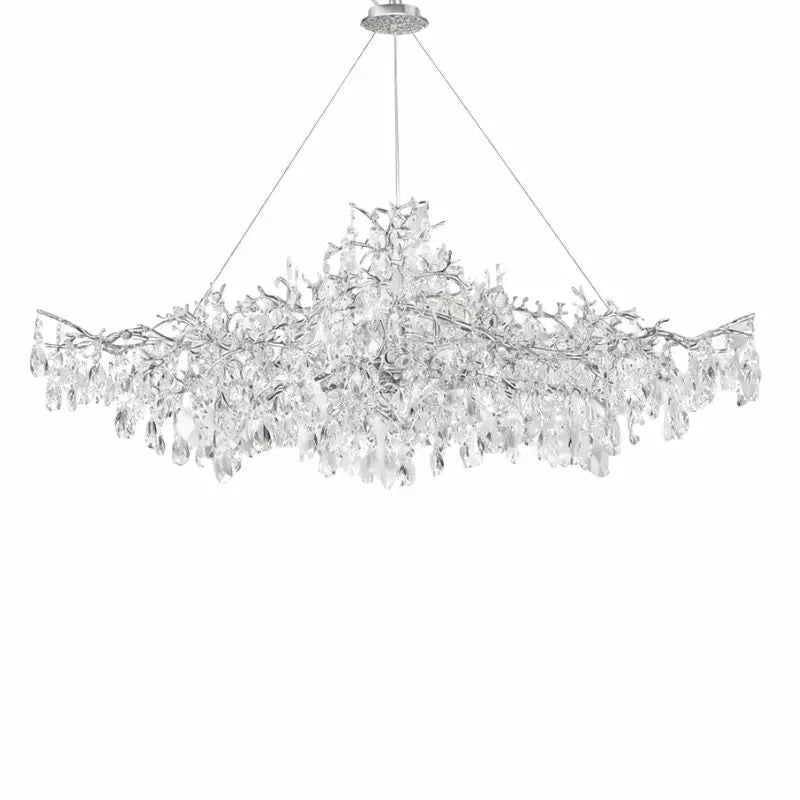Lighting plays a vital role in making your home feel welcoming and functional. It can change the way a room looks and feels, influencing everything from mood to style. In this article, we will explore essential tips for selecting the right lighting for your space, ensuring that each room shines in its best light.
Key Takeaways
- Choose a mix of ambient, task, and accent lighting for a balanced feel.
- Consider the purpose of each room when selecting fixtures.
- Use dimmers to adjust lighting levels for different moods.
- Avoid common mistakes like ignoring shadows and using the wrong fixture size.
- Explore budget-friendly options like DIY projects and energy-efficient lights.
Understanding the Basics of Lighting for Homes
The Importance of Lighting in Home Design
Lighting is a key part of making your home feel welcoming and stylish. Good lighting can change the whole vibe of a room. It helps highlight your furniture and decor, making everything look better. Without proper lighting, even the prettiest room can feel dull and uninviting.
Different Types of Lighting: Ambient, Task, and Accent
There are three main types of lighting you should know about:
- Ambient Lighting: This is the main light in a room, like ceiling lights or lamps. It brightens up the space and helps reduce shadows.
- Task Lighting: This type focuses on specific areas where you need more light, like reading nooks or kitchen counters. Examples include desk lamps and under-cabinet lights.
- Accent Lighting: This is used to highlight special features, like artwork or plants. It adds a decorative touch and creates a cozy atmosphere.
How Lighting Affects Mood and Ambiance
Lighting can really change how you feel in a room. For example:
- Bright lights can make you feel energized and alert.
- Soft lights can create a calm and relaxing environment.
- Colored lights can add fun and excitement to a space.
Remember, the right lighting can make your home feel more inviting and comfortable. It’s all about finding the right balance for each room.
To sum it up, understanding the basics of lighting is essential for creating a beautiful and functional home. Whether you choose captivating chandeliers & pendant lights or simple lamps, the right lighting can transform your space!
Choosing the Right Lighting for Each Room
Lighting plays a crucial role in how each room feels and functions. Choosing the right lighting can transform your space and enhance its purpose. Here’s how to select the best lighting for different areas of your home:
Living Room Lighting Tips
- Use a mix of ambient, task, and accent lighting.
- Consider living room color schemes to match your lighting.
- Add floor lamps or table lamps for cozy corners.
Best Lighting Options for the Kitchen
- Task lighting is essential for food preparation areas.
- Under-cabinet lights can brighten countertops effectively.
- Pendant lights above the island can serve as both task and accent lighting.
Creating a Cozy Bedroom with Proper Lighting
- Soft, warm lights help create a relaxing atmosphere.
- Bedside lamps are great for reading without harsh glare.
- Crystal chandeliers can add elegance and charm to the space.
Bathroom Lighting Essentials
- Bright, even lighting is key for grooming tasks.
- Use a combination of overhead lights and vanity lights to eliminate shadows.
- Dimmers can help adjust brightness for different times of day.
Remember, the right lighting not only enhances the beauty of your home but also improves its functionality. Choose wisely!
Selecting the Perfect Lighting Fixtures
Choosing the right lighting fixtures can greatly enhance your home's atmosphere. The right fixtures can transform a space and create the perfect mood. Here are some tips to help you select the best options:
Chandeliers and Pendant Lights
- Chandeliers add elegance and are great for dining rooms and entryways.
- Pendant lights are versatile and can be used in kitchens or over dining tables.
- Consider the size of the room; larger spaces can handle bigger fixtures, while smaller rooms benefit from compact designs.
Wall Sconces and Floor Lamps
- Wall sconces are perfect for accent lighting and can highlight artwork.
- Floor lamps provide flexibility and can be moved around easily.
- Use them in living rooms or bedrooms to create cozy corners.
Table Lamps and Desk Lamps
- Table lamps are ideal for task lighting on desks or nightstands.
- Choose lamps that match your decor style for a cohesive look.
- They can also add a personal touch to your space.
Outdoor Lighting Solutions
- For outdoor areas, consider a mix of ambient and task lighting.
- Use path lights for safety and string lights for ambiance.
- Ensure outdoor fixtures are weather-resistant to last longer.
Remember, selecting the right light fixture involves considering room size, lighting needs, and installation requirements. Smaller rooms suit smaller fixtures, while larger spaces can accommodate more dramatic pieces. Different rooms require different lighting types, and installation complexity varies. Cost is also a factor; flush mounts are generally more affordable than chandeliers, which can be expensive due to design and materials.
Tips for Layering Lighting in Your Home
Creating the right atmosphere in your home involves layering your lighting effectively. This means using different types of lighting to enhance the look and feel of each room. Here are some essential tips:
Combining Ambient, Task, and Accent Lighting
- Ambient Lighting: This is the main source of light in a room. It can come from ceiling fixtures or natural light through windows. Make sure to maximize daylight by keeping windows clear and using light-colored curtains.
- Task Lighting: This type of lighting is focused on areas where you need extra light, like reading nooks or kitchen counters. Consider using table lamps or under-cabinet lights.
- Accent Lighting: Use this to highlight specific features, such as artwork or a gallery wall ideas for living room. Spotlights or decorative lamps can add a personal touch.
Using Dimmers to Control Light Levels
- Install dimmer switches in key areas like the living room and bedroom. This allows you to adjust the brightness based on your mood or activity.
- Dimmers can help save energy and extend the life of your bulbs.
- They also create a cozy atmosphere for gatherings or quiet evenings.
Balancing Natural and Artificial Light
- Natural Light: Open your curtains during the day to let in sunlight. This not only brightens your space but also improves your mood.
- Artificial Light: Use a mix of warm and cool bulbs to create a balanced environment. Warm lights are great for relaxation, while cool lights are better for tasks.
Remember, the goal is to create a well-lit space that feels inviting and functional. Layering your lighting can transform your home into a cozy retreat.
Common Lighting Mistakes to Avoid
Overlooking the Importance of Shadows
One common mistake is not considering where shadows will fall when placing lights. If a light is installed in the wrong spot, it can create shadows that make tasks harder. For example, in a kitchen, a shadow on your workspace can make cooking difficult.
Choosing the Wrong Size Fixtures
Another frequent error is using fixtures that are too small or too large for the space. The size of your lamps and chandeliers should match the room's dimensions. A small chandelier over a large dining table can look out of place. Here’s a quick guide:
| Room Type | Recommended Fixture Size |
|---|---|
| Small Room | 12-16 inches |
| Medium Room | 18-24 inches |
| Large Room | 24-36 inches |
Ignoring the Color Temperature of Lights
Lastly, many people forget about the color temperature of their lights. Different bulbs can create different moods. For example, warm white lights are cozy, while cool white lights are more energizing. Here’s a simple breakdown:
- Warm White (2700K-3000K): Great for living rooms and bedrooms.
- Cool White (3500K-4100K): Ideal for kitchens and bathrooms.
- Daylight (5000K-6500K): Best for task lighting and workspaces.
Remember, the right lighting can transform your space. Avoid these common mistakes to create a well-lit and inviting home!
Budget-Friendly Lighting Ideas
DIY Lighting Projects
Creating your own lighting can be a fun and cost-effective way to brighten your home. Here are some simple DIY projects you can try:
- Mason Jar Lights: Use mason jars to create unique pendant lights.
- Wine Bottle Lamps: Transform old wine bottles into stylish lamps.
- Fabric Lampshades: Re-cover old lampshades with fabric to match your decor.
Affordable Lighting Fixtures
You don’t need to spend a fortune to find great lighting. Here are some affordable options:
| Fixture Type | Price Range | Where to Buy |
|---|---|---|
| Table Lamps | $20 - $50 | IKEA, Target |
| Floor Lamps | $30 - $80 | Walmart, Wayfair |
| Wall Sconces | $15 - $40 | Home Depot, Amazon |
Energy-Efficient Lighting Options
Switching to energy-efficient lighting can save you money in the long run. Consider these options:
- LED Bulbs: They last longer and use less energy.
- Smart Bulbs: Control your lighting with your phone and save energy.
- Solar Lights: Great for outdoor spaces and eco-friendly.
Remember, good lighting can transform your space without breaking the bank. Whether you’re looking for small apartment decor ideas or how to decorate a small bathroom, the right lighting can make all the difference!
Personalizing Your Home with Unique Lighting
Creating a unique atmosphere in your home can be achieved through thoughtful lighting choices. Lighting can transform a space, making it feel warm and inviting or bright and energetic. Here are some ways to personalize your home with unique lighting:
Using Vintage and Antique Fixtures
- Vintage fixtures can add character and charm to your space.
- Look for unique pieces that reflect your style, such as:
- Antique chandeliers for a classic touch.
- Retro lamps that fit into boho chic home decor.
- Vintage sconces that enhance farmhouse kitchen decor.
Custom Lighting Solutions
- Consider custom lighting to fit your specific needs and style.
- Options include:
- Tailored pendant lights for a modern look.
- Built-in lighting for a seamless design.
- Unique shapes and colors that match your Scandinavian home decor inspiration.
Incorporating Smart Lighting Technology
- Smart lighting allows you to control the ambiance with ease.
- Benefits include:
- Adjusting brightness and color temperature to suit your mood.
- Setting schedules for different times of the day.
- Integrating with home automation systems for convenience.
Lighting is not just about brightness; it’s about creating a mood and enhancing your home’s personality.
By mixing and matching different styles, such as industrial style home decor and modern fixtures, you can create a space that truly reflects who you are. Remember, the right lighting can highlight your favorite decor pieces, like plants for home decor, and make your home feel complete.
Whether you prefer a cozy glow or bright illumination, personalizing your lighting can make all the difference in your home’s atmosphere.
Make your home shine with special lighting that shows off your style! Unique lights can change the whole feel of a room, making it cozy or bright and fun. Check out our amazing selection of chandeliers and lamps to find the perfect fit for your space. Visit our website today to explore all the options!
Final Thoughts on Lighting Your Home
Choosing the right lighting for your home can really change how it feels. Good lighting makes spaces cozy and welcoming. Remember to think about what each room needs. Use different types of lights to create the best atmosphere. Whether you want bright lights for working or soft lights for relaxing, it’s all about balance. Take your time to pick fixtures that match your style and budget. With the right lighting, your home can shine and feel just right!
Frequently Asked Questions
Why is lighting important in my home?
Lighting helps create the mood and feel of a room. It can make spaces look bigger or cozier and highlight your favorite decorations.
What are the main types of lighting I should use?
There are three main types of lighting: ambient (general light), task (for specific activities), and accent (to highlight features or art).
How can I choose the right lighting for each room?
Think about what each room is used for. For example, use bright lights in the kitchen for cooking, and soft lights in the bedroom for relaxing.
What mistakes should I avoid when selecting lighting?
Don't forget about shadows, choose the right size fixtures, and pay attention to the color of the light.
Can I find affordable lighting options?
Yes! Look for DIY projects, budget-friendly fixtures, and energy-efficient lights to save money.
How can I personalize my lighting choices?
Use unique fixtures, vintage items, or smart lighting systems to reflect your personal style.







